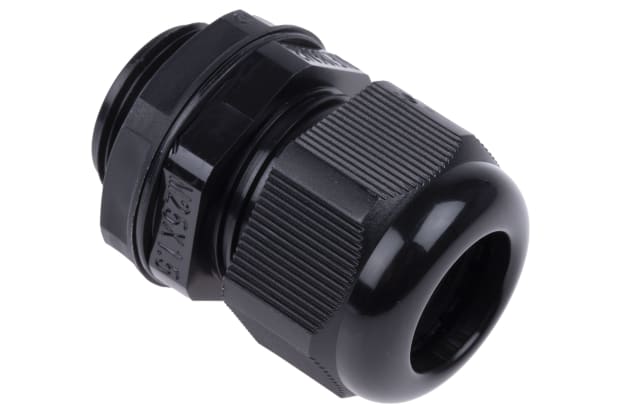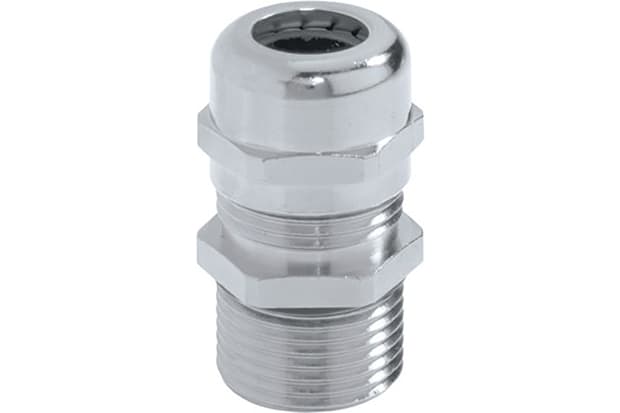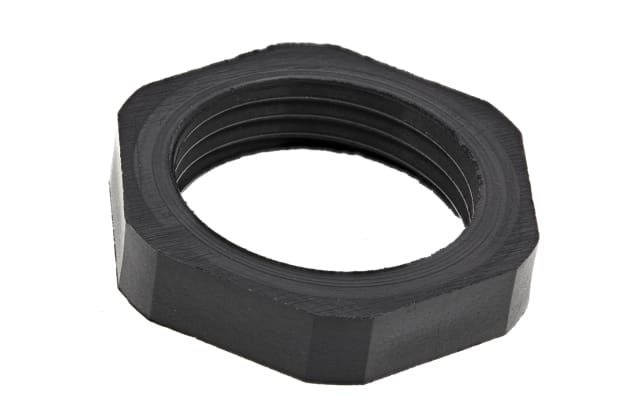- Published 30 Apr 2024
- Last Modified 30 Apr 2024
- 9 min
The Comprehensive Guide to Cable Glands
Choosing the right cable gland is important. Our guide will help you select the best cable gland for the job.

In this comprehensive guide, we'll explore everything you need to know about cable glands, from their functions and types to installation and popular brands. Whether you're an electrician, engineer, or simply someone interested in the world of electrical fittings, this guide will provide valuable insights into the world of cable glands in New Zealand.
What are Cable Glands?

Cable glands are mechanical devices designed to secure and protect cables where they enter electrical equipment. They provide a means of connecting and terminating cables to ensure a safe and reliable electrical connection. One of the primary functions of cable glands is to act as a barrier, preventing the ingress of dust, dirt, moisture, and other contaminants into electrical enclosures. This protection is essential for maintaining the safety and integrity of electrical systems, particularly in demanding environments.
Cable glands are commonly used in a wide range of applications, including industrial machinery, control panels, automation systems, and outdoor installations. They are available in various sizes and configurations to accommodate different types of cables, making them versatile solutions for cable management and safety.
How Do Cable Glands Work?
Cable glands operate on the principle of compression and sealing. When a cable is inserted into a cable gland, the sealing mechanism, typically made of rubber or other resilient materials, surrounds the cable, creating a tight seal. This seal prevents the entry of moisture, dust, or other contaminants into the electrical enclosure, ensuring the safety and reliability of the electrical connection.
The compression mechanism within the cable gland secures the cable in place, holding it firmly to prevent any strain on the cable or the connected equipment. The compression nut is tightened to create a secure connection, and the cable gland is then attached to the electrical enclosure, providing a watertight and secure entry point for the cable.
Cable glands may also include additional features such as strain relief components to prevent cable damage due to tension or pulling forces. These features make cable glands essential for maintaining the safety and reliability of electrical installations.
Types of Cable Glands
Cable glands come in a variety of types, each designed for specific applications and cable configurations. Understanding the different types of cable glands is essential for selecting the right one for your specific needs. Let's explore some of the most common types of cable glands:
Armoured Cable Glands
Armoured cable glands, also known as SWA (steel wire armoured) cable glands, are specifically designed to be used with armoured cables. Armoured cables are electrical cables with added layers of protection, typically made of metal, to provide additional security in demanding environments. Armoured cable glands are engineered to accommodate the unique construction of armoured cables, ensuring a secure and reliable connection.
These cable glands feature components that are tailored to the specific requirements of armoured cables, including clamping mechanisms to grip the armour layer and compression fittings to create a watertight seal. They are commonly used in industrial settings, outdoor installations, and any application where robust cable protection is required.
Waterproof Cable Glands
Waterproof cable glands, as the name suggests, are designed to provide a high level of protection against water and moisture ingress. These cable glands are essential for outdoor installations, marine applications, or any environment where exposure to water is a concern.
Waterproof cable glands typically feature enhanced sealing mechanisms, often incorporating multiple layers of sealing materials to provide additional protection. The compression and sealing components of waterproof cable glands are engineered to maintain their effectiveness even in challenging conditions, making them reliable solutions for preventing water ingress into electrical enclosures.
Metal Cable Glands
Metal cable glands, including stainless steel, brass, and aluminium cable glands, are known for their durability and robustness. These cable glands are commonly used in demanding industrial applications where resistance to corrosion, high temperatures, or mechanical stress is required.
Stainless steel cable glands are particularly well-suited for applications where corrosion resistance is essential, such as in the food and beverage or pharmaceutical industries. Brass cable glands are valued for their excellent electrical conductivity and are often used in electrical installations. Aluminium cable glands are lightweight and offer good corrosion resistance, making them suitable for a wide range of applications.
Metal cable glands provide a secure and reliable means of cable termination and are often chosen for applications where durability and performance are top priorities.
Explosion-Proof Cable Glands
Explosion-proof cable glands, also known as flameproof cable glands, are engineered to be used in hazardous environments where the risk of explosive gases or dust is present. These cable glands are designed to prevent the propagation of explosions from one part of the installation to another, providing an essential safety feature in industries such as oil and gas, chemical processing, and mining.
Explosion-proof cable glands are constructed with robust materials and feature specialised sealing and compression mechanisms that can contain an explosion within the enclosure. These cable glands are rigorously tested and certified to ensure they meet the highest safety standards, providing peace of mind in critical applications where safety is paramount.
EMC Cable Glands
EMC (electromagnetic compatibility) cable glands are designed to address electromagnetic interference (EMI) and radio frequency interference (RFI) issues in electrical installations. These cable glands are used when maintaining signal integrity and preventing interference in sensitive electronic equipment is essential, such as in control systems, communication networks, and industrial automation.
EMC cable glands feature unique designs that incorporate shielding and grounding mechanisms to minimise the impact of electromagnetic interference. They provide a reliable solution for ensuring that electrical installations comply with EMC regulations and standards, making them valuable in applications where the reliable transmission of signals and data is critical.
Cable Gland Sizes
Cable glands are available in a wide range of sizes to accommodate different cable diameters and types. Selecting the right size of cable gland is crucial to ensure a proper fit and a secure connection.
Cable gland sizes are typically specified based on the maximum and minimum cable diameters they can accommodate. When choosing a cable gland, you'll need to consider the diameter of your cable, including its outer sheath or armour, to determine the appropriate size.
Most cable glands are designed to accommodate a range of cable diameters by using sealing inserts or compression components that can be adjusted to fit different cable sizes.
Cable Gland Materials
Cable glands are commonly made from a variety of materials, each with its own set of properties and advantages. The choice of material for a cable gland depends on the specific requirements of the application. Let's explore some of the most common materials used for cable glands:

Plastic Cable Glands
Plastic cable glands, typically made from materials like polyamide (nylon) or PVC, are lightweight, corrosion-resistant, and cost-effective. They are often used in indoor or less demanding applications where exposure to harsh conditions is not a concern. Plastic cable glands provide reliable cable management solutions and are commonly used in a wide range of electrical installations.
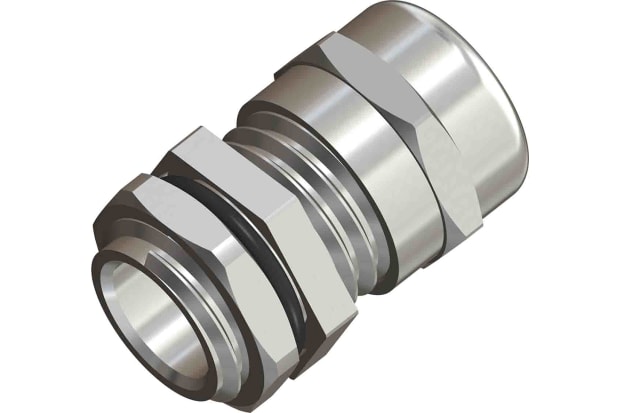
Metal Cable Glands
Metal cable glands, including stainless steel, brass, and aluminium cable glands, are known for their durability and robustness. These cable glands are commonly used in demanding industrial applications where resistance to corrosion, high temperatures, or mechanical stress is required.
Stainless steel cable glands are particularly well-suited for applications where corrosion resistance is essential, such as in the food and beverage or pharmaceutical industries. Brass cable glands are valued for their excellent electrical conductivity and are often used in electrical installations. Aluminium cable glands are lightweight and offer good corrosion resistance, making them suitable for a wide range of applications.
Metal cable glands provide a secure and reliable means of cable termination and are often chosen for applications where durability and performance are top priorities.
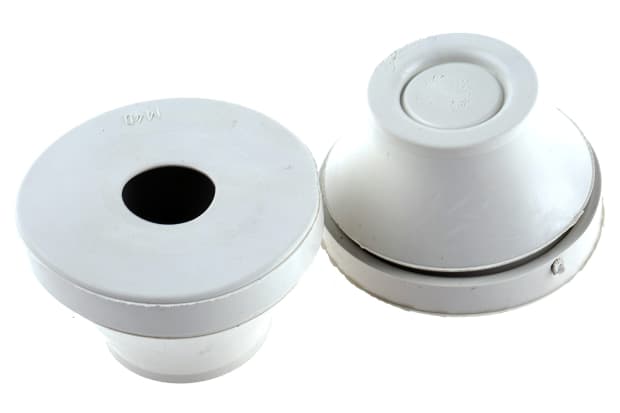
Synthetic Rubber Cable Glands
Cable glands made from synthetic rubber materials, such as neoprene or EPDM (ethylene propylene diene monomer), are commonly used in applications where flexibility and resistance to environmental conditions are important. Synthetic rubber cable glands provide excellent sealing properties and are often used in outdoor or waterproof applications.
The choice of material for your cable gland will depend on a variety of factors, including the environmental conditions, cable type, and specific requirements of your application. By considering these factors, you can select the most suitable cable gland material to ensure the safety and reliability of your electrical installations.
How to Install a Cable Gland
Installing a cable gland is a straightforward process that requires careful attention to detail to ensure a secure and reliable connection. Here's a step-by-step guide on how to install a cable gland:
- Before you begin, ensure that the electrical equipment is switched off and that you have the necessary tools and safety equipment, such as gloves and safety glasses.
- Select the appropriate cable gland based on the size and type of your cable. Ensure that the cable gland is compatible with the cable diameter and the material of the cable's outer sheath or armour.
- Prepare the cable by removing the outer sheath or armour to expose the individual insulated conductors. The length of the exposed cable should match the dimensions specified for the cable gland.
- Insert the cable through the cable gland's sealing and compression components. Ensure that the cable is positioned correctly and that the sealing components form a tight seal around the cable.
- Tighten the compression nut to secure the cable in place. Use the appropriate tools, such as a wrench or spanner, to tighten the nut to the manufacturer's recommended torque.
- Attach the cable gland to the electrical enclosure or equipment. Ensure that the cable gland is firmly secured to provide strain relief and support for the cable.
- Once the cable gland is installed, inspect the connection to ensure that the cable is securely held in place and that the sealing components form a watertight seal. Perform a visual check to confirm that the installation meets the manufacturer's guidelines and industry standards.
By following these steps, you can ensure a proper and secure installation of a cable gland, providing effective protection for your electrical installations. However, it's important to note that the installation process may vary slightly depending on the type and configuration of the cable gland you are using. Always refer to the manufacturer's instructions and guidelines for specific installation procedures.
